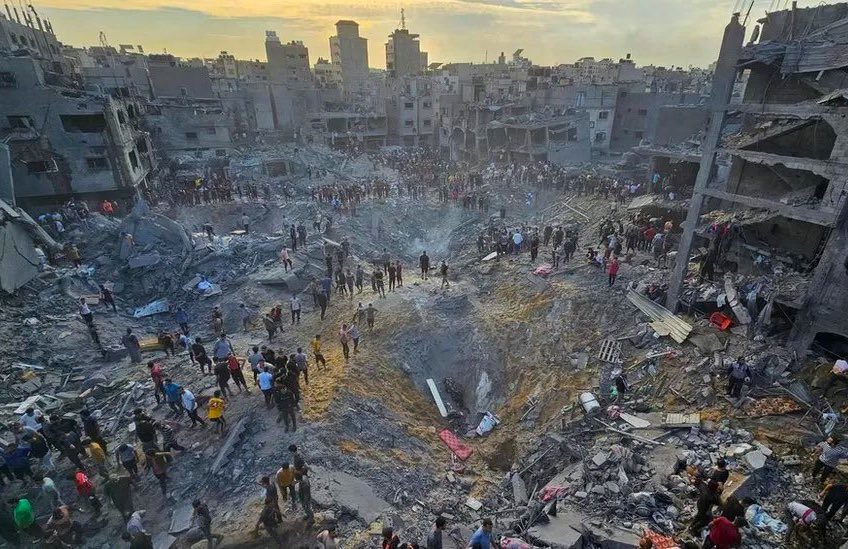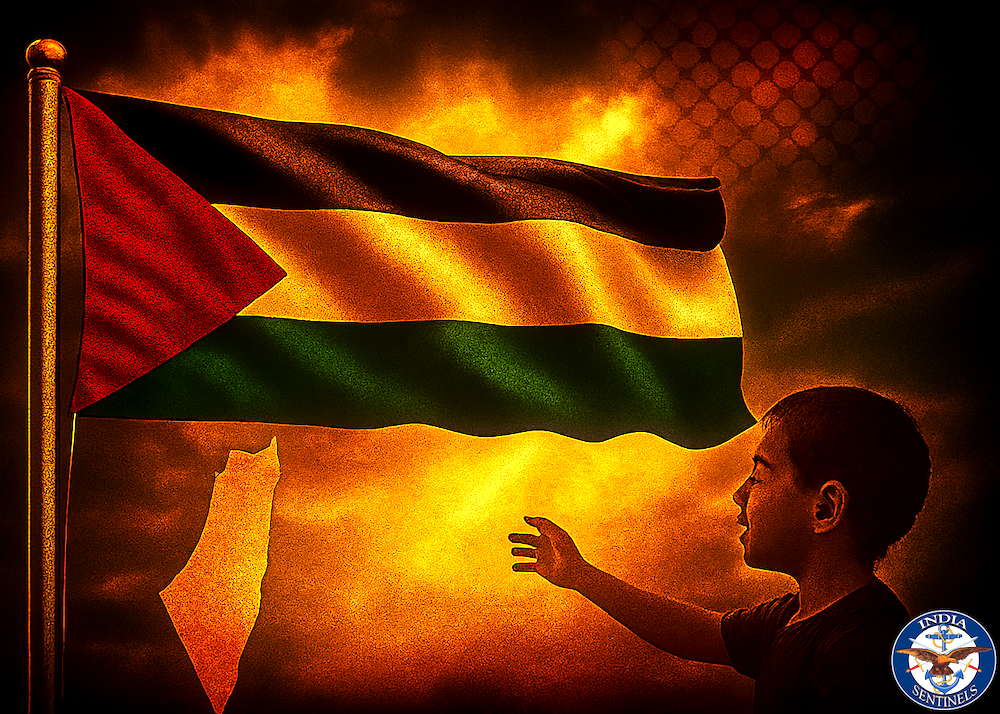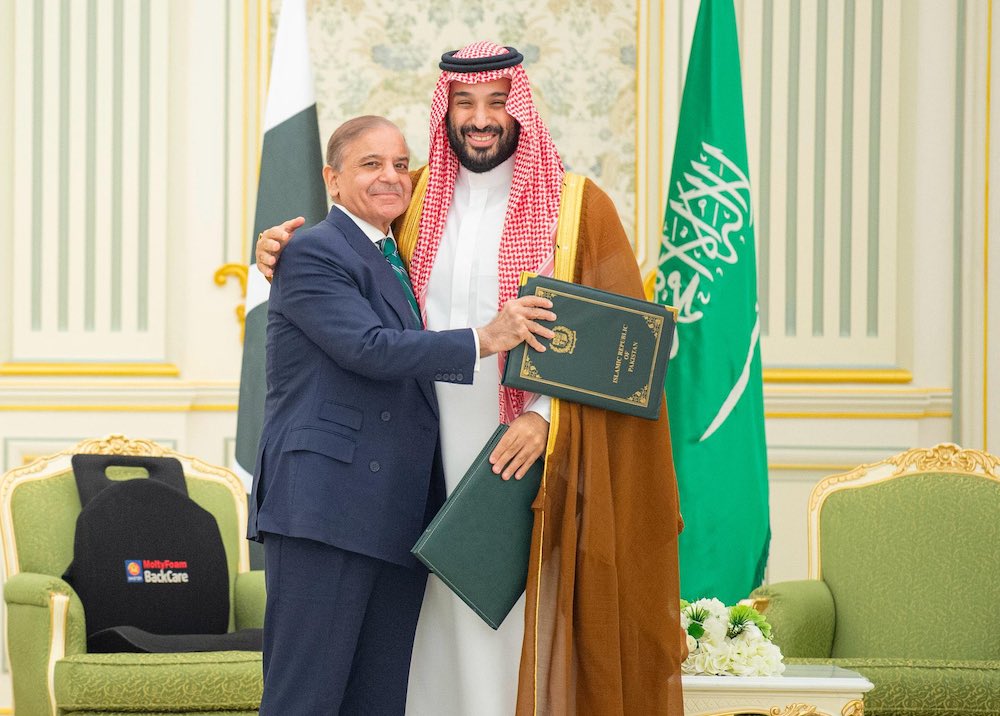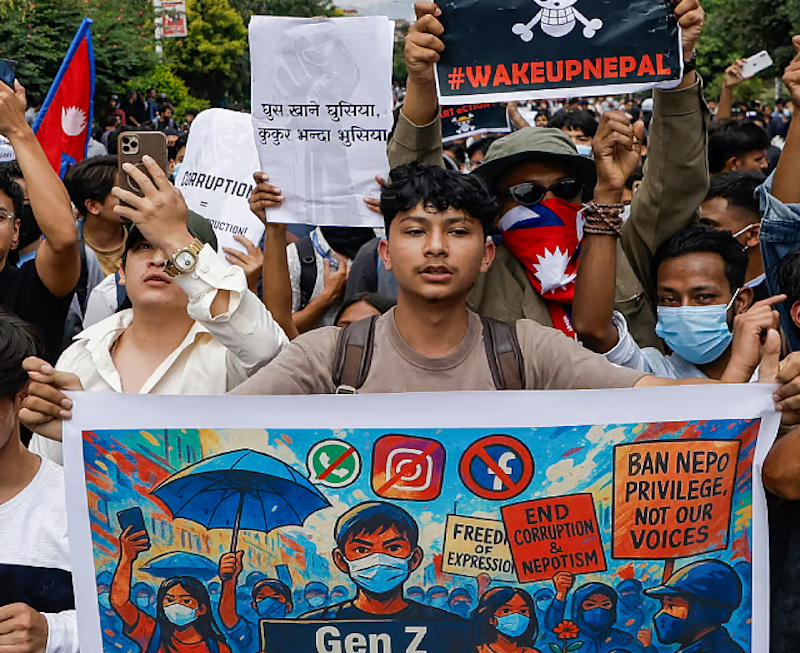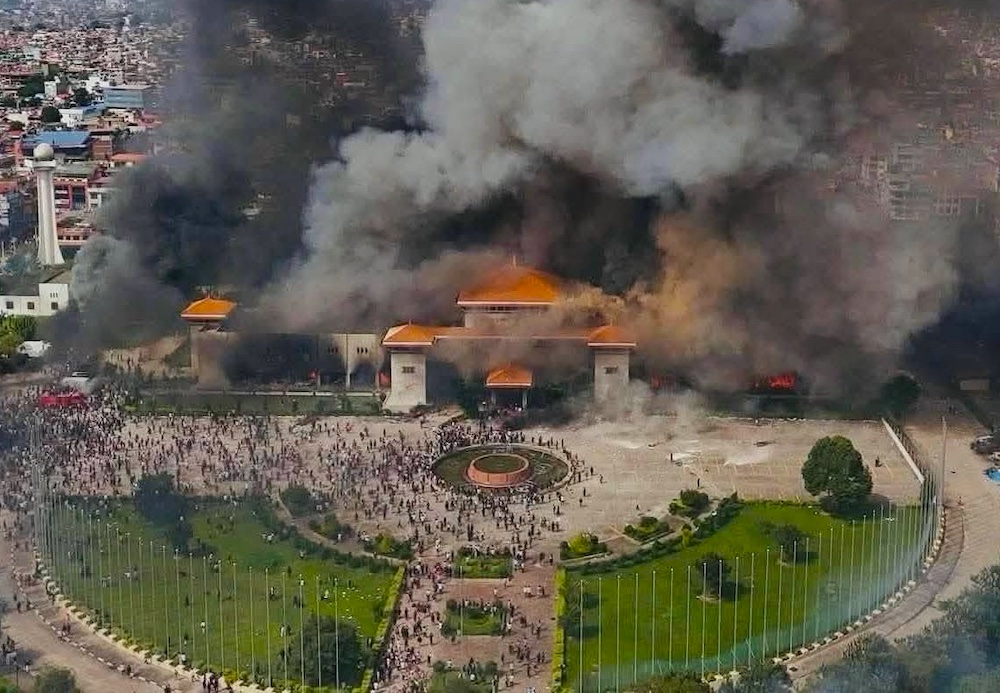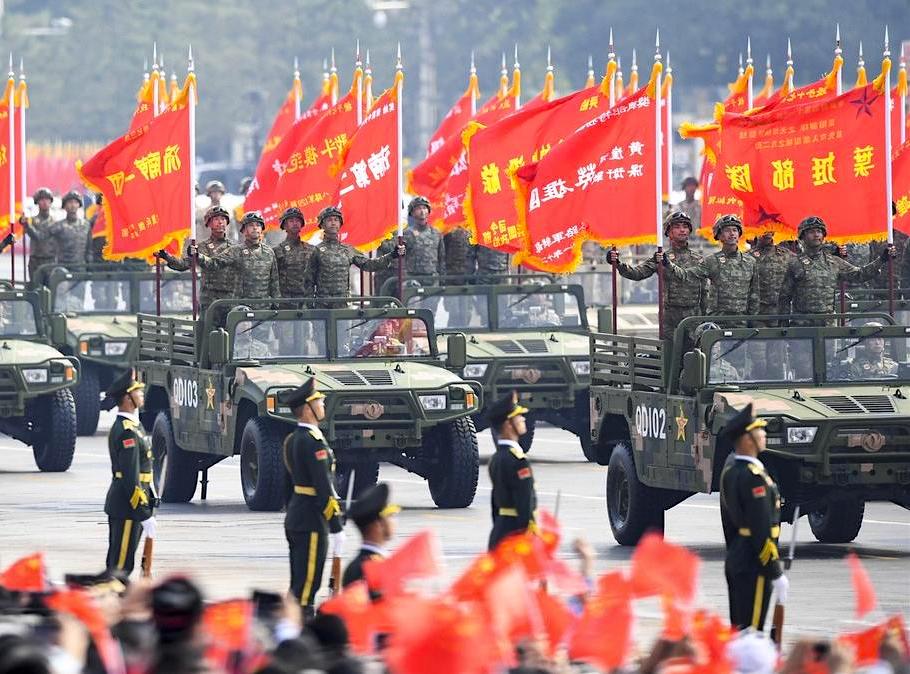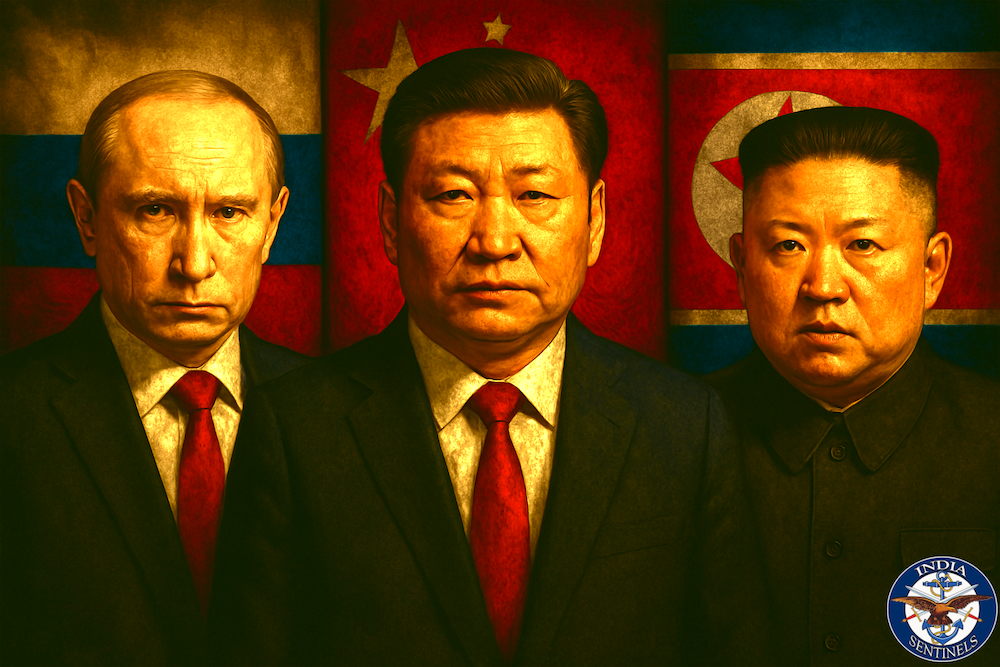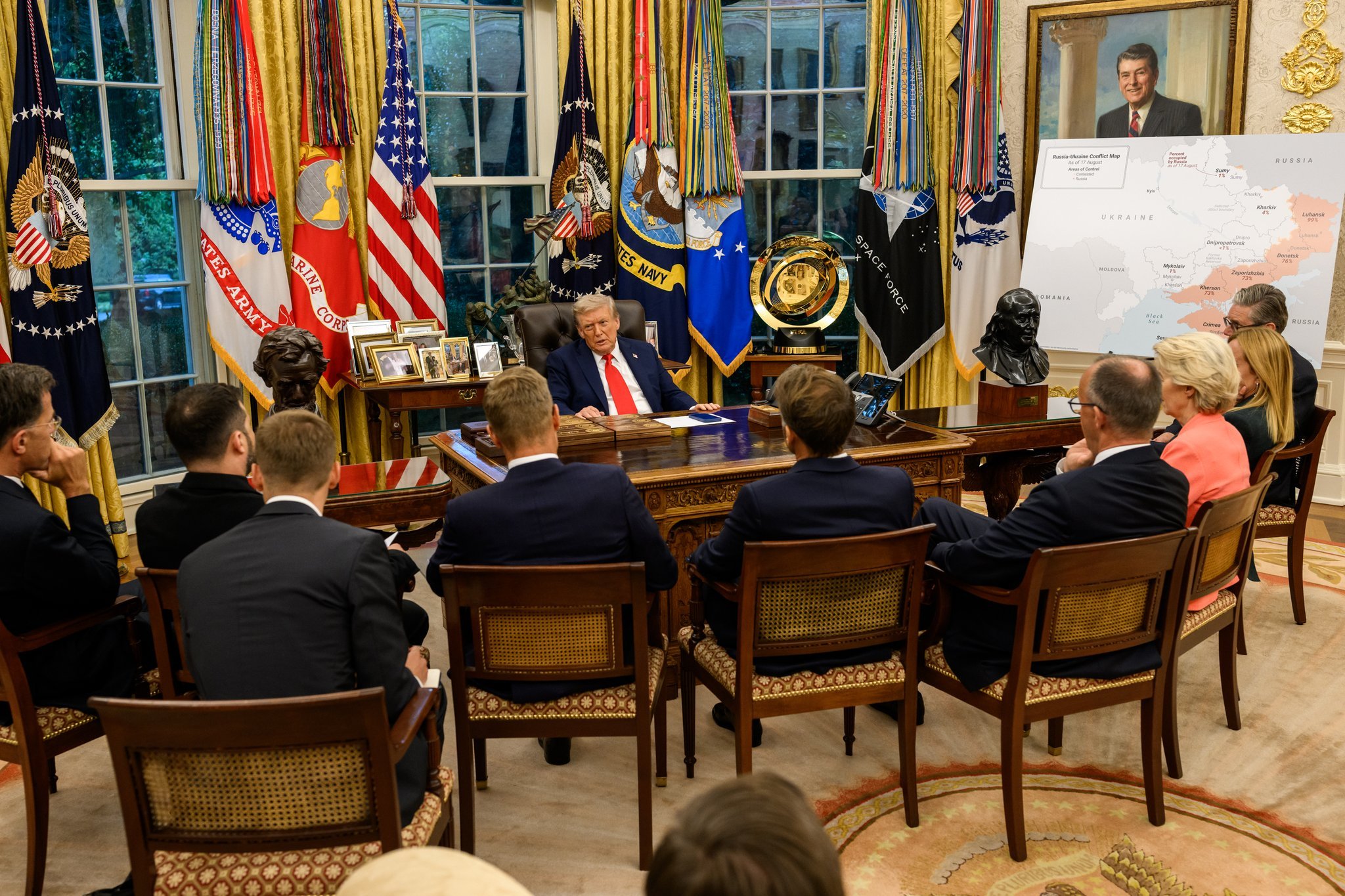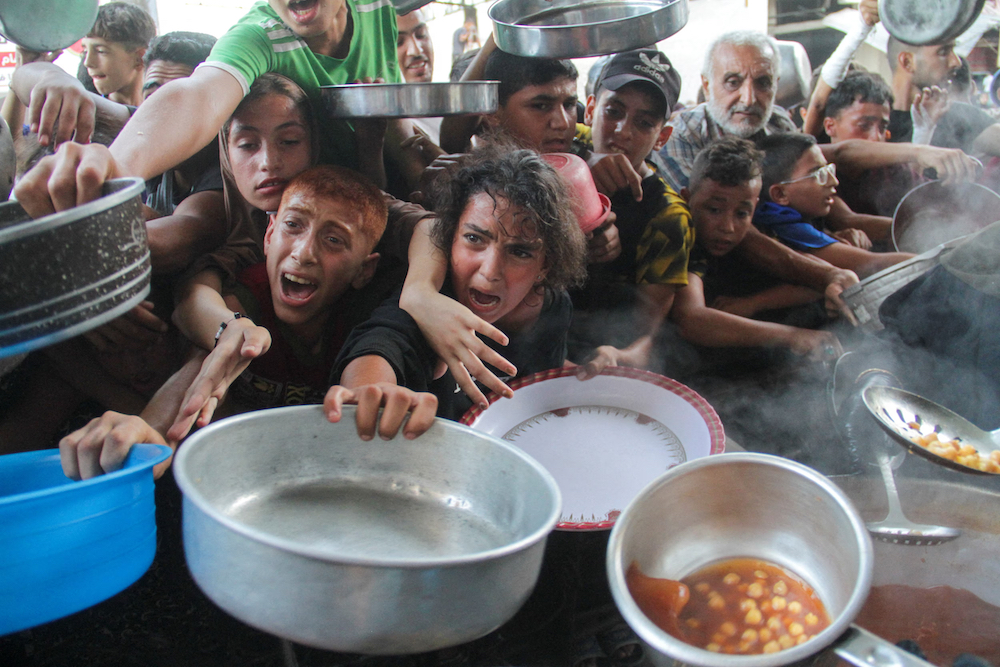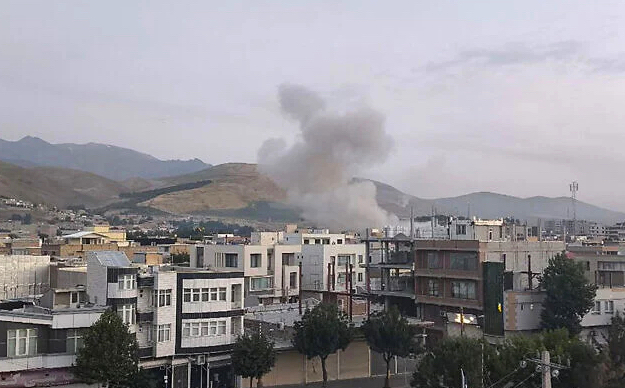 Handout photo released by Iran’s Revolutionary Guard Corps shows smoke billowing from a site targeted by an Israeli strike in the capital Tehran.
Handout photo released by Iran’s Revolutionary Guard Corps shows smoke billowing from a site targeted by an Israeli strike in the capital Tehran.
New Delhi: Israel launched its most devastating assault on Iranian territory since the Iran-Iraq war of the 1980s, in the early hours of Friday. Israeli warplanes carried out a massive multi-pronged attack that targeted nuclear facilities, military installations and key personnel across the Islamic republic.
The operation, codenamed “Rising Lion”, began at 3am local time on June 13 and fundamentally altered the dynamics of the long-standing shadow war between the two regional powers, bringing their conflict into the open with catastrophic consequences.
Scale of Israeli operation
The Israel defence forces deployed more than 200 aircraft in five waves of airstrikes, dropping over 330 munitions on approximately 100 targets across Tehran and multiple provinces. The coordinated effort between the IDF and Mossad saw Israeli intelligence services pre-position assets to disable Iran's air defence systems before the attack commenced.
The Israeli defence minister, Israel Katz, declared a nationwide state of emergency at 3am local time, warning of imminent Iranian retaliation. Israeli military officials described the action as a “pre-emptive strike” based on intelligence indicating Iran had amassed sufficient enriched uranium to produce up to 15 nuclear weapons within days.
The Israeli prime minister, Benjamin Netanyahu, later confirmed the strikes aimed to neutralize threats from Iran's nuclear and ballistic missile programmes. Israeli officials emphasized the operation was conducted unilaterally, without coordination with the United States, though the timing coincided with stalled nuclear negotiations between Iran and the US.
Nuclear infrastructure devastated
The Israeli strikes focused heavily on Iran’s nuclear infrastructure, targeting three key facilities with devastating effect.
The Natanz nuclear facility, located approximately 225 kilometres south of Tehran, sustained significant damage to its above-ground structures. The International Atomic Energy Agency director general, Rafael Grossi, confirmed the pilot enrichment plant where Iran enriched uranium to 20% U-235 was destroyed.
Satellite imagery analysed by the Institute for Space and International Security revealed damage to the fuel enrichment plant and an electrical substation at Natanz. The IAEA later confirmed four critical buildings at the Isfahan nuclear facility were damaged, including the uranium conversion facility and fuel plate fabrication plant.
However, the heavily fortified Fordow underground enrichment facility, situated deep within mountains near Qom, appeared to have escaped significant damage. Israeli and US officials acknowledged this facility would require the most powerful “bunker buster” weapons to penetrate effectively.
Military targets hit
Beyond nuclear sites, Israeli forces targeted extensive military infrastructure across Iran. The strikes hit missile complexes near Tabriz, missile bases in Kermanshah, and Islamic Revolutionary Guard Corps facilities near Tehran and in Piranshahr.
Satellite imagery confirmed damage to various components of the Tabriz missile complex, including weapon storage facilities, missile shelters and silos. The IRGC headquarters in Tehran was reportedly set ablaze, with residential areas housing senior military officers also struck.
Israeli forces targeted surface-to-surface missile infrastructure, air-defence systems and radar installations throughout western Iran.
Nuclear talks collapse
The Israeli strikes occurred against the backdrop of stalled nuclear negotiations between Iran and the United States, mediated by Oman. The talks, which began in April 2025 following a letter from the US president, Donald Trump, to the Iranian supreme leader, Ali Khamenei, had shown initial promise but faced significant obstacles.
The sixth round of negotiations scheduled for June 15 in Muscat was cancelled following Israel’s attack, with Tehran asserting it could not negotiate while under military assault.
Iran had proposed a three-step plan during earlier rounds, including temporarily lowering uranium enrichment to 3.67% in exchange for access to frozen assets and oil export authorization. The US had demanded complete dismantlement of Iran’s nuclear programme and an end to support for regional proxy groups within 60 days.
Top commanders killed
The Israeli strikes inflicted unprecedented losses on Iran’s military and scientific leadership. Iran’s UN ambassador reported 78 people killed and more than 320 wounded in the initial attacks.
The most significant military loss was Major General Mohammad Bagheri, Iran’s chief of staff of the armed forces and second-highest military commander after Khamenei. Bagheri, who had served since 2016, was replaced by Major General Abdolrahim Mousavi following his death.
Major General Hossein Salami, commander in chief of the IRGC, was also killed in the strikes. Salami had led the IRGC since 2019 and was considered one of Iran’s most powerful military figures. He was succeeded by Major General Ahmad Vahidi.
Other high-ranking military casualties included Major General Gholamali Rashid, commander of the Khatam-al Anbiya central headquarters, and Brigadier General Amir Ali Hajizadeh, commander of the IRGC aerospace force.
Nuclear scientists assassinated
The killing of Iranian nuclear scientists represented a significant escalation in Israel’s campaign against Iran’s nuclear programme. Six prominent nuclear scientists were confirmed killed, dealing a severe blow to Iran’s nuclear-research capabilities.
Dr Fereydoun Abbasi-Davani, former head of the Atomic Energy organisation of Iran and ex-member of the Iranian parliament, Majles, was among the most prominent casualties. Abbasi, who held a PhD in nuclear physics, had previously survived an Israeli assassination attempt in 2010. He was killed along with his wife and child when their residence was targeted.
Dr Mohammad Mehdi Tehranchi, president of Iran’s Islamic Azad University and a theoretical physicist, was also killed. Tehranchi had been placed on the US Department of Commerce’s entity list in 2020 for activities contrary to national security interests.
Other nuclear scientists killed included Dr Abdolhamid Minouchehr, dean of the faculty of nuclear engineering at Shahid Beheshti University, and Dr Ahmad Reza Zolfaghari, a professor of nuclear engineering.
The targeting of scientists’ residences resulted in civilian casualties, including family members and other residents in affected neighbourhoods.
Iran’s defiant response
Iran’s initial response was characterized by shock and defiance. The supreme leader, Ayatollah Ali Khamenei, issued a statement declaring Israel would not escape punishment.
“We will not allow them to escape safely from this great crime they committed,” Khamenei stated, warning that “the Zionist regime has prepared for itself a bitter, painful fate.”
The scale of the attack caught Iranian leadership off guard, with officials privately expressing frustration at intelligence and defence failures. Iranian officials questioned where their air defences were and how Israel could attack at will without facing opposition.
Iran immediately began reshuffling its military leadership, with Khamenei appointing new commanders to replace those killed. Iran also sought international mediation through Oman and Qatar to engage with the United States.
Massive retaliation launched
Iran’s military response began on the evening of June 13 with the launch of a massive retaliatory strike against Israel. The Islamic republic fired over 150 ballistic missiles and more than 100 drones in what Iranian officials described as the “beginning” of their response.
The Iranian attacks targeted multiple Israeli cities and strategic assets, with missiles striking areas in northern and central Israel. Tehran announced it had launched at least 100 missiles toward Israel, demonstrating its unwillingness to comply with international calls for restraint.
Iran’s missile arsenal proved capable of penetrating Israeli air defences, with some projectiles reaching their targets despite Israel’s advanced defence systems. The attacks continued over multiple days in coordinated assaults.
Israeli casualties reported
Despite Israel’s sophisticated air-defence systems, Iranian missiles succeeded in causing significant casualties and damage. The IDF reported 80–90% of Iranian missiles were intercepted, but the remainder caused substantial harm.
Israeli casualties mounted over the course of the conflict, with reports indicating at least 24 Israelis killed in the Iranian attacks by June 16. The Magen David Adom emergency service treated 67 individuals for injuries sustained in strikes across four different locations.
Iranian missiles struck residential areas in several Israeli cities, including Tel Aviv, Petah Tikva, and Bnei Brak. In Petah Tikva, missiles hit a residential building, scorching concrete walls, shattering windows and causing significant damage to several apartments.
Israeli authorities reported the evacuation of 1,300 residents in Petah Tikva, 300 in Tel Aviv and 60 in Haifa due to damage to residential buildings. The port city of Haifa also sustained hits, with fires reported in the industrial zone.
Significantly, the US embassy branch in Tel Aviv sustained minor damage from Iranian missile strikes, marking the first direct Iranian attack on a US diplomatic facility during the conflict. While no injuries were reported at the embassy, the symbolic impact was substantial.
International alarm grows
The United States found itself in a complex position, balancing support for Israeli security with efforts to prevent regional escalation. Trump initially described Israel’s attacks as “excellent” and “very successful”, but also emphasized his preference for diplomatic solutions.
Trump revealed he had provided Iran with a 60-day ultimatum to reach a nuclear agreement, and that period had elapsed without a deal before Israel struck. The president posted on social media that “Iran should have accepted the ‘deal’ I urged them to sign.”
The administration faced a critical decision regarding whether to assist Israel in targeting the heavily fortified Fordow nuclear facility, which would require US “bunker buster” bombs and direct American military involvement.
European calls for restraint
The European Union expressed deep concern about the dangerous escalation and called for restraint from all parties. The EU high representative for foreign affairs issued a statement emphasizing that “lasting security is built through diplomacy, not military action,”
The European Commission president, Ursula von der Leyen, placed blame on Iran for the conflict. However, she also told Netanyahu that diplomacy was ultimately the best solution.
Russia and China condemn strikes
At an emergency UN security council session, both Russia and China issued strong condemnations of Israel’s military strikes. China’s ambassador to the UN, Fu Cong, denounced what he described as “violations of Iranian sovereignty” and urged all parties to halt “dangerous military actions”.
Russia’s ambassador, Vasily Nebenzya, delivered a forceful rebuke, accusing Israel of bringing the region closer to “a full-scale nuclear catastrophe.” Nebenzya labelled the strikes a “flagrant violation” of both the UN charter and international law.
Regional implications
The conflict prompted concerns across the global south about potential broader regional instability and its impact on global energy markets. Oil prices surged over 2% following the escalation, with airlines suspending flights to and from Ben Gurion Airport.
Iraq, hosting approximately 2,500 American troops, requested Iran refrain from targeting US forces within its borders. The conflict also overshadowed ongoing humanitarian concerns in Gaza, with international attention diverted from the Palestinian situation.
No end in sight
The Israeli strikes on Iran and subsequent Iranian retaliation have fundamentally altered the strategic landscape of the Middle East. What began as a shadow war conducted through proxies and covert operations has erupted into direct military confrontation between two regional powers.
The human cost continues to mount and potential for far greater destruction if the conflict escalates further. The collapse of nuclear negotiations between Iran and the US adds complexity, as diplomatic solutions become increasingly difficult while missiles and bombs continue to fall.

